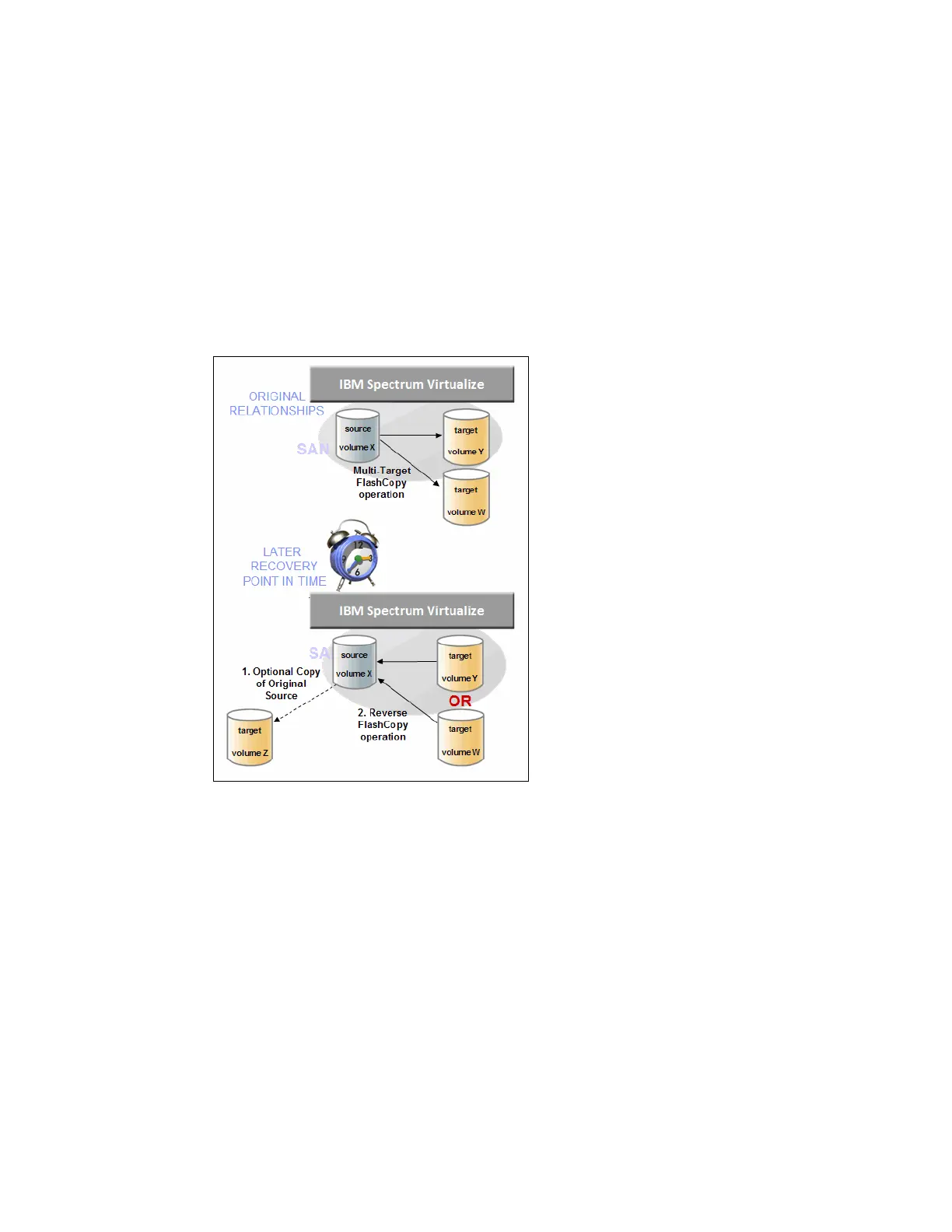490 Implementing the IBM Storwize V5000 Gen2 with IBM Spectrum Virtualize V8.1
Complete the following steps to restore from an on-disk backup:
1. (Optional) Create a target volume (volume Z) and use FlashCopy to copy the production
volume (volume X) onto the new target for later problem analysis.
2. Create a FlashCopy map with the backup to be restored (volume Y) or (volume W) as the
source volume and volume X as the target volume, if this map does not exist.
3. Start the FlashCopy map (volume Y → volume X) with the -restore option to copy the
backup data onto the production disk. If the -restore option is specified and no
FlashCopy mapping exists, the command is ignored, which preserves your data integrity.
The production disk is instantly available with the backup data. Figure 10-1 shows an
example of Reverse FlashCopy.
Figure 10-1 Reverse FlashCopy
Regardless of whether the initial FlashCopy map (volume X → volume Y) is incremental, the
Reverse FlashCopy operation copies the modified data only.
Consistency Groups are reversed by creating a set of new reverse FlashCopy maps and
adding them to a new reverse Consistency Group. Consistency Groups cannot contain more
than one FlashCopy map with the same target volume.
10.1.9 IBM Spectrum Protect Snapshot
The management of many large FlashCopy relationships and Consistency Groups is a
complex task without a form of automation for assistance. IBM Spectrum Protect™ Snapshot
(formerly
IBM Tivoli® FlashCopy Manager) provides fast application-aware backups and
restores using advanced point-in-time image technologies in the IBM Spectrum Virtualize.
